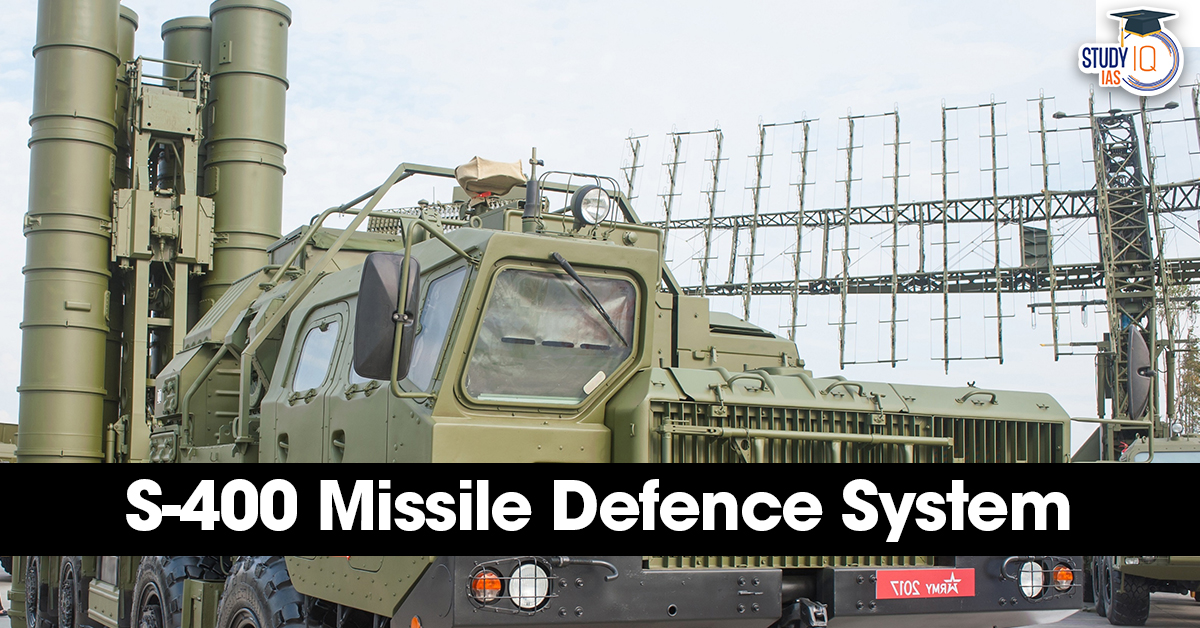Table of Contents
In a major news development, India’s state-of-the-art S-400 Missile defence system, named “Sudarshan Chakra,” was said to have foiled a big Pakistani bid to attack 15 Indian cities using missiles and drones. The attempted missile and drone attacks took place in the early morning hours of Thursday, the 8th of May, between 1:10 AM and 1:20 AM above Punjab. Read this article to learn about how S-400 Shot Down 5 Pak Jets & 1 AW&C during Operation Sindoor.
IAF Chief AP Singh Confirms 5 Pak Jets & 1 AW&C Shot Down By S-400 During Operation Sindoor
As per recent announcements by the Indian Air Force Chief, Air Chief Marshal AP Singh, India’s S-400 air defence system destroyed five Pakistani fighter planes and an Airborne Early Warning and Control (AW&C) aircraft in “Operation Sindoor.”
Addressing the 16th Air Chief Marshal LM Katre Memorial Lecture in Bengaluru, AP Singh officially confirmed these facts for the first time, identifying the S-400 as a “game-changer” in the operation. The Pakistani aircraft were shot down at long range, he said, with the AW&C planes being struck at a distance of 300 km. This is reported as the biggest ever recorded surface-to-air kill.
He also showed before-and-after satellite views of the attacks on targets in Pakistan, such as Jaish-e-Mohammed headquarters at Bahawalpur, highlighting the accuracy of the strikes and the limited collateral damage. He also said F-16 fighter aircraft and an AW&C aircraft were destroyed on the ground at different airbases. The operation, which was a reaction to a terror attack at Pahalgam, lasted 80 to 90 hours and, as per Singh, met its target, with Pakistan initiating talks.
| Category | Details |
|---|---|
| Fighter Jets Shot Down | 5 Pakistani jets destroyed |
| Surveillance Aircraft Downed | 1 large AEW&C/ELINT-type aircraft at ~300 km |
| Ground Asset Damage | F-16 hangar, control centers, radars, AEW&C hangar targeted |
| Crucial System Used | S-400 air defence system |
| Strategic Outcome | Forced Pakistan to seek talks; shift in air dominance |
What is S-400 or S-400 Missile Defence System?
The S-400 Missile Defence System (also written as S 400 or S-400 Triumf) is a long-range air defence missile system developed by Russia’s Almaz-Antey. Designed to intercept and destroy enemy aircraft, ballistic missiles, cruise missiles, and drones, it is considered one of the most advanced systems globally.
| Feature | Details |
|---|---|
| Origin | Russia |
| Inducted in India | 2021 |
| Developer | Almaz-Antey |
| Role | Surface-to-Air Missile (SAM) system |
India’s S-400 Air Defence System Foils Pakistan’s Attempts To Target 15 Indian Cities
India’s air defence capabilities came into focus on Wednesday evening, late, as the Indian Air Force (IAF) S-400 Sudarshan Chakra air defence missile systems proved to be a game-changer in an attempt by Pakistan to escalate hostilities by targeting Indian locations.
Pakistan Targeted 15 Indian Cities
“On the evening of 07-08 May 2025, Pakistan tried to target several military targets in Northern and Western India such as Awantipura, Srinagar, Jammu, Pathankot, Amritsar, Kapurthala, Jalandhar, Ludhiana, Adampur, Bhatinda, Chandigarh, Nal, Phalodi, Uttarlai, and Bhuj with drones and missiles,” the Defence Minister stated.
Pakistan had tried to target Indian military installations throughout north and west India, but Indian Integrated Counter-UAS Grid and Air Defence systems quickly targeted and destroyed the incoming threats. There were massive explosions heard throughout Punjab between 1:10 AM and 1:20 AM, and debris has been recovered with confirmation of mid-air interception. Subsequent power outages in some locations were resolved by the early morning.
Escalation Along the LoC
The Defence Ministry also reported that Pakistan has intensified its shelling across the Line of Control (LoC) in Jammu and Kashmir with heavy artillery and mortars against civilian sectors in Kupwara, Baramulla, Uri, Poonch, Mendhar, and Rajouri.
Unfortunately, 16 Indian civilians, three women and five children, have been killed as a result of this Pakistani firing. India responded with accurate strikes to silence the Pakistan artillery posts. Officials reaffirmed India’s non-escalation position, with any additional provocation to be responded to in the same strength but controlled intensity.
Also Read: All Eyes on Poonch Attack
India’s Response: India Destroys Pakistan Air Defence System
As retaliation, the Indian Armed Forces attacked Pakistani air defence radars and installations, such as major facilities in Lahore. According to sources, one of Pakistan’s HQ-9 air defence systems located in Lahore was successfully neutralised. India’s S-400 ‘Sudarshan Chakra’ air defence system shot down and destroyed several drones and missiles fired from Pakistan.
Indian Objectives
- To dismantle Pakistan’s capability to retaliate via air defence intercepts.
- To preemptively counter any drone or missile-based escalation by Pakistan.
- To disable radar and missile guidance systems, enabling Pakistani retaliation on Indian military bases.
India Neutralised Pakistan HQ-9 Air Defence System
India neutralised a Chinese-supplied HQ-9 air defence system located near Lahore, Pakistan. The system is comparable to the Russian S-300/S-400 and is Pakistan’s most advanced surface-to-air defence shield. Targeted elements included: Long-range radar installations, HQ-9 missile launcher vehicles, Command and control communication relay systems.
Cities Affected during India Attacks Pakistan
Blasts were reported in at least 9 major locations:
- Karachi – Near port installations and cantonment zones.
- Gujranwala – Explosions near a railway junction and local police headquarters.
- Rawalpindi – Blasts near military logistics offices and cantonment areas.
- Lahore – Security forces intercepted drones; explosions still occurred on the outskirts.
- Bahawalpur – Close to a known Jaish-e-Mohammed stronghold.
- Chakwal
- Chhor – A military hub near the Indian border.
- Mianwali – Airbase zone targeted.
- Attock – Oil depots were reportedly damaged.
How It Was Executed
India used precision air-launched and ground-launched missiles, supported by:
- Electronic warfare aircraft
- Heron TP drones for real-time imagery and surveillance
- Stealth drones to jam radar systems before the strike
US Advisory
During the heightened tensions and India’s retaliatory attacks close to Lahore, the US Consulate General in Lahore ordered the American people to shelter-in-place or depart the city if it was safe.
This recent development represents a serious escalation in the conflict post-Operation Sindoor and highlights the pivotal importance of India’s sophisticated air defence systems in protecting its airspace and cities. The tension continues, with each side resorting to retaliatory measures and increased security along the border.
Also Read: Multiple Blasts Heard in Lahore
About India’s S-400 Missile Defence System: Sudarshan Chakra
The S-400 Missile Defence System, which reportedly goes by the moniker “Sudarshan Chakra” in the Indian military, is a Russian-made, cutting-edge, long-range surface-to-air missile (SAM) system. It is regarded as one of the most advanced air defence systems in the world and forms a key component of India’s integrated air defence system.
The S-400 system can detect targets up to 600 kilometres and destroy them at distances of up to 400 kilometres. India has four squadrons of S-400 Sudarshan Chakra. One guards Jammu and Kashmir and Punjab from Pathankot, and another guards important locations in Rajasthan and Gujarat.
Why S-400 Air Defence System Named Sudarshan Chakra?
The name is inspired by Hindu mythology, where the Sudarshan Chakra is a mighty revolving weapon wielded by Lord Vishnu. Likewise, the S-400 system is regarded as a mighty weapon in India’s defence arsenal, capable of quickly detecting and neutralising air threats.
S-400 Missile Defence System Price and Deal with India
-
S-400 Missile System Price: Approx. $500 million per unit (domestic), around $1–1.25 billion for exports
-
India-Russia Deal: In 2018, India signed a $5.4 billion (₹35,000 crore) deal for 5 S-400 units.
How Many S400 Does India Have?
At present, India has three operational squadrons (or regiments) of the S-400 Triumf air defence system. India signed a deal with Russia in 2018 to procure a total of 5 S-400 squadrons for $5.43 billion. While the initial delivery schedule aimed for completion by 2025, some delays occurred. Current reports indicate that the remaining two S-400 squadrons are expected to be delivered by 2026.
-
Total Ordered: 5 S-400 squadrons
-
Delivered So Far (as of 2025): 3 units operational
-
Remaining Units: 2 more squadrons to be delivered by the end of 2026
Check here: List of Missiles of India
Key Features of S-400 Air Defence System
- Long-Range Capability: The S-400 is able to engage targets at ranges of up to 400 km and altitudes of up to 30 km, thus being able to defend large spaces against a range of threats.
- Multi-Target Tracking and Engagement: It can simultaneously track up to 100 targets and engage 36 at a time, including aircraft, drones, cruise missiles, and ballistic missiles.
- Multi-Missile System: The S-400 is equipped with four various missiles to provide a broad spectrum of threats and ranges: 40N6 (400 km), 48N6 (250 km), 9M96E2 (120 km), and 9M96E (40 km).
- Advanced Radar and Detection: It employs a mix of radars (phased array and AESA) that can detect stealth targets and low-flying threats, even in the presence of electronic countermeasures.
- Mobility and Rapid Deployment: The system is installed on mobile launch platforms, enabling rapid relocation and deployment, making it suitable for both offensive and defensive missions.
- Integrated Command and Control: The S-400 can be integrated into larger air defence systems and interoperates with other radar and missile systems to provide a layered defence approach.
- Counter-Stealth Capabilities: It is one of the only systems that can detect and engage stealth aircraft, including the F-35 and B-2 bombers.
S-400 Missile Defence System vs Agni Missile
| Feature | S-400 | Agni Missile Series |
|---|---|---|
| Type | Air Defence System (SAM) | Ballistic Missile (Offensive) |
| Role | Intercept enemy aircraft/missiles | Strike enemy cities or bases |
| Range | Up to 400 km | Up to 5,000+ km (Agni-V) |
| Origin | Russia | India |
| Purpose | Defensive | Strategic Deterrence |


 Theaterisation of the Indian Armed Force...
Theaterisation of the Indian Armed Force...
 Industrial Accidents in India: Reasons, ...
Industrial Accidents in India: Reasons, ...
 India’s Fighter Jet Conundrum, Current...
India’s Fighter Jet Conundrum, Current...

























